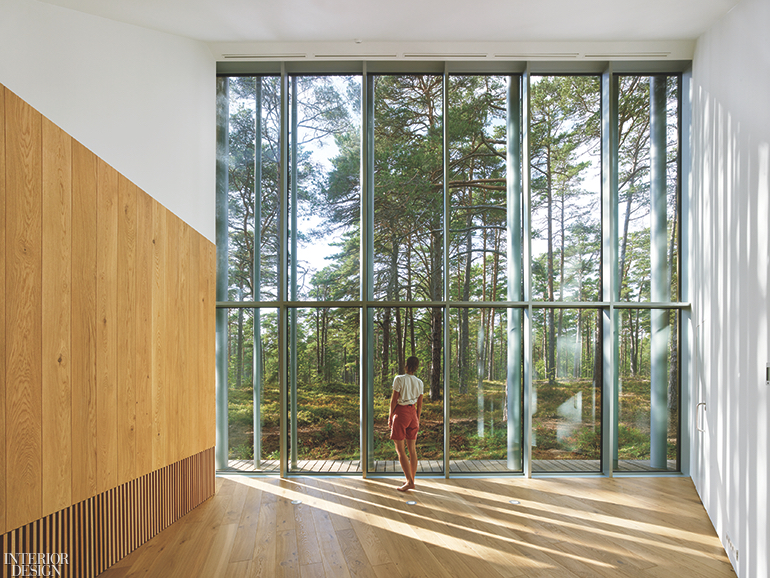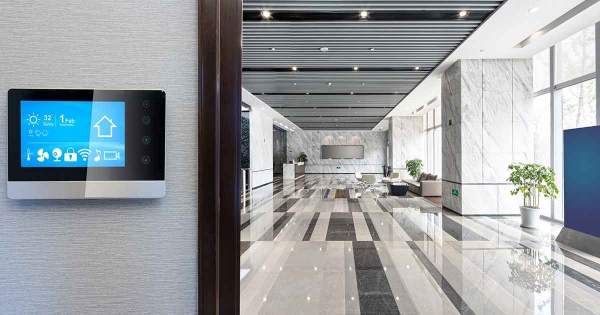Building renovations often aim to improve the appearance, but also offer an excellent opportunity to improve technical aspects. For example, renovations offer the opportunity to reduce water and energy consumption. This not only lowers electricity costs, but also a building’s ecological footprint.
The choice of lights and windows affects both the appearance and the energy efficiency. Ideally, the product selection should achieve the intended appearance while saving energy.
- Lighting is one of the largest electrical loads in buildings and in most cases is only surpassed by air conditioning. However, LED products can reduce lighting costs by 30-90% depending on the type of lamp previously used.
- Windows are also important: they let a lot of heat into the building in summer and give off heat in winter. High-performance windows save energy all year round by reducing heat transfer.
When a home renovation project includes plumbing fixtures, there is also an excellent way to conserve water. A simple solution is to purchase new devices with the WaterSense label from the US EPA. These fittings offer water savings of 20% or more.
Decorative advantages of LED lighting
LED lighting is considered an energy efficiency measure, but can also be used for a variety of decorative purposes. Consider the following characteristics of LEDs:
- They are very small, which gives great flexibility when lamp designers develop new products. Decorative LED lights come in a variety of shapes and sizes.
- LED lamps can be made with the look of older lightbulbs for projects where the interior designer is looking for an antique look. There are LED lamps that mimic the appearance of incandescent lamps, and even kerosene lamps.
LED lighting is also very compatible with automatic controls that are commonly used to create “light scenes” in building interiors. Many LED lamps are dimmable and can withstand frequent switching. On the other hand, HID and fluorescent lamps degrade faster if they are switched frequently.
There are also LED lamps with an adjustable light color that can be used to achieve different lighting effects. If these lamps are used in a kitchen, for example, they can take on full brightness and a clear white tone for the preparation of food. Once the food is ready, they can reduce their intensity and switch to a warmer light color, simulating the ambience of a posh restaurant.
In addition to these decorative possibilities, LEDs bring energy efficiency. When replacing incandescent lamps or fluorescent lamps, energy savings of over 80% are typical. Upgrading HID lamps results in savings of around 60%, while upgrading fluorescent lamps saves over 30%.
Advantages of high-performance windows
Because windows are thin and transparent, they allow more heat to move than opaque walls. Single pane windows increase the workload for both air conditioners and space heaters because they are not an effective barrier to heat transfer.
If you are planning a renovation that includes window replacement, Energy advisor recommend windows with double or triple glazing and coating with low emissivity. These windows reduce heat transfer in both directions by over 60%, saving HVAC. The heat is kept outside more effectively in summer and inside in winter.
Like LED lights, high-performance windows are available in various designs and sizes. Therefore, they can be used without spoiling the appearance of a building. With the right product selection, building renovation can also be an energy efficiency project. Indeed, a renovation is a great opportunity to replace equipment like air conditioners and water heaters as well, as the building doesn’t have to be disrupted twice.
Author Bio – Michael Tobias, PE, LEED AP, CEM.
 Michael Tobias is the founder and director of Chicago Engineers, one of the Inc 5000 fastest growing companies in America.
Michael Tobias is the founder and director of Chicago Engineers, one of the Inc 5000 fastest growing companies in America.
He leads a team of more than 30 mechanical, electrical, plumbing, and fire safety engineers based in New York City. and has led over 1,000 projects in Chicago, New York, New Jersey, Pennsylvania, Connecticut, Florida, Maryland and California, as well as Singapore and Malaysia.
 TopsDecor.com Home Decor Ideas
TopsDecor.com Home Decor Ideas






